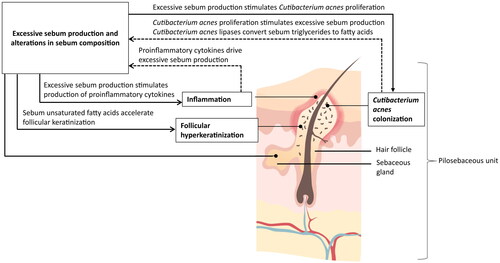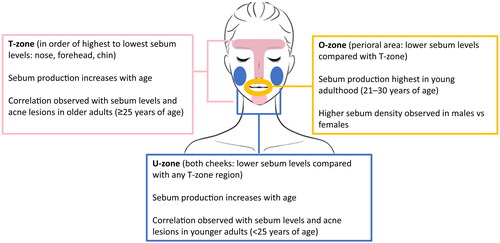Figures & data
Figure 1. Contribution of sebum to acne pathophysiology. Acne pathophysiology is driven by 4 key factors: alteration in sebaceous immunobiology (excessive sebum production and alterations in sebum composition), inflammation, follicular hyperkeratinization, and colonization of Cutibacterium acnes (Citation6,Citation47,Citation48). Solid lines indicate an impact of sebum on the other 3 acne pathogenic factors, whereas dashed lines indicate the inverse.

Figure 2. Sebum production trends by facial region. Sebum levels are highest on the nose, followed by the forehead and chin (comprising the T-zone), and are lowest on the cheeks (comprising the U-zone), regardless of the presence of acne lesions (Citation86,Citation87). Differences in sebum production have also been noted based on patient age and sex (Citation85,Citation87).

Table 1. Overview of pharmacologic therapies for patients with acne and the impact on sebaceous immunobiology.
Data availability statement
Data sharing is not applicable to this article as no data sets were generated or analyzed during the current study.
